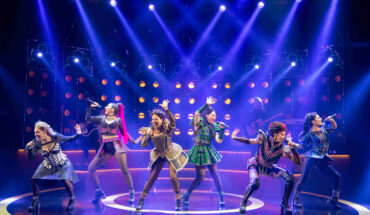The iconic Joan Sutherland Theatre stage at the Sydney Opera House stepped back in time to ancient Egypt with the reprisal of Verdi’s operatic masterpiece Aida. Opera Australia has reimagined one of its treasured gems and history’s most-loved and oft-performed epics. With a fusion of live performance and digital screens, the audience is taken on a journey of grand proportions in an epic tale of passion, triumph, and tragedy.
Verdi was initially commissioned to write Aida for the opening of the Suez Canal in Egypt, but the composer declined. He was later convinced to write the opera by famed Egyptologist Auguste Mariette for the opening of Cairo’s Khedivial Opera House. Aida was not ready in time, but still premiered in Cairo on Christmas Eve in 1871. It was an enormous triumph and has remained at the heart of the operatic cannon ever since.
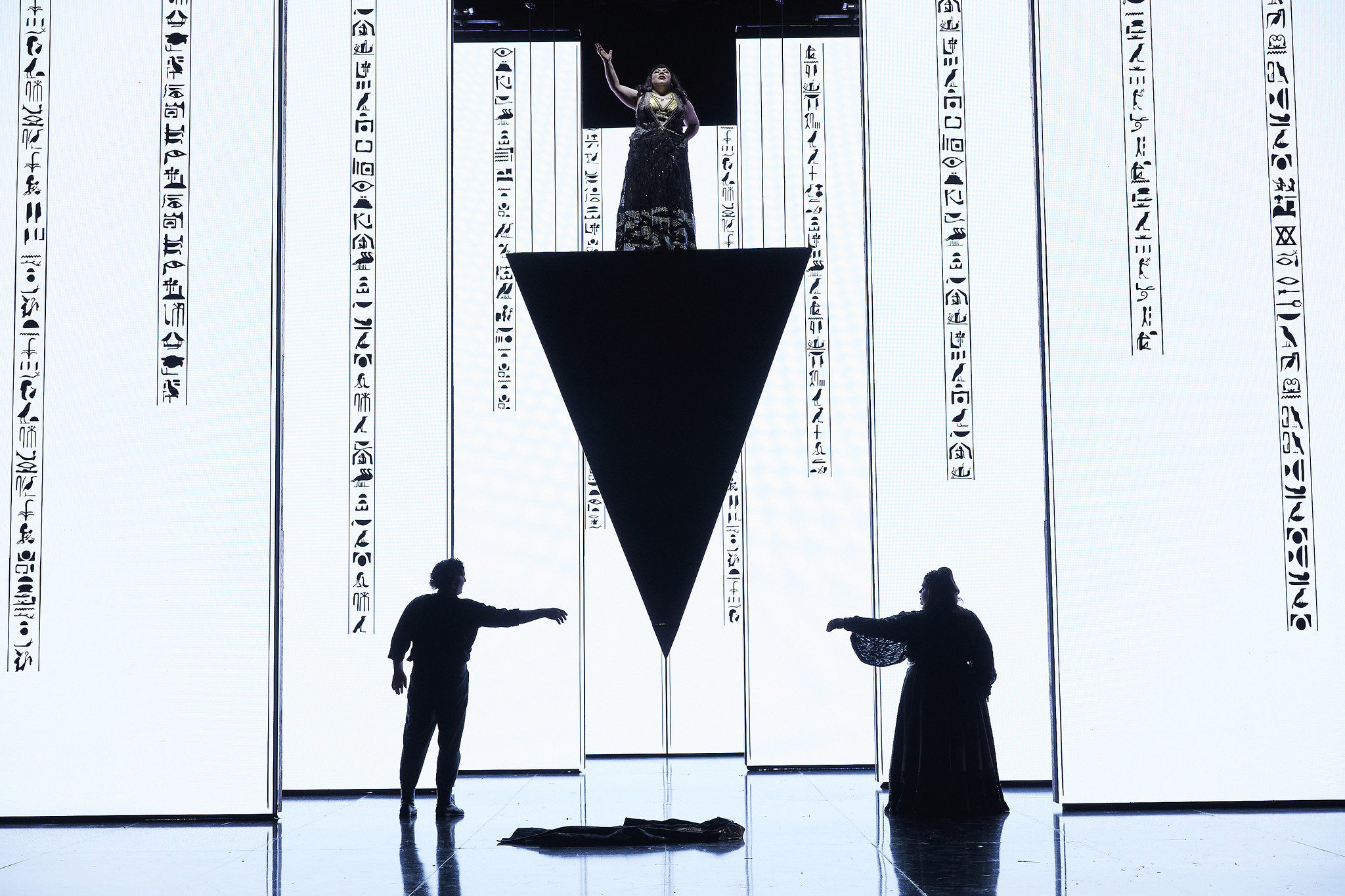 Originally directed by Italy’s Davide Livermore, and now under revival director Shaun Rennie, Aida is a thrilling theatrical experience. The popular opera gets a modern makeover with sets designed by Gio Forma and digital design work by D-wok. The old-world pageantry is replaced by hyperreal digital imagery on ten soaring, cinema-sized HD LED screens. The superb videos, which include both time-lapse and slow-motion are like works of modern art. From giant writhing serpents to statuesque, semi-nude warriors, to contemporary images of billowing, ominous storm clouds, licking flames and a monstrous black panther, create a cinematic and visually stunning feast. Costumes designed by Gianluca Falaschi, particularly the animal-deity headdresses, have an over-the-top flair adding to the opulence we associate with ancient Egypt. Everything is excessive in size and yet intricate and beautiful.
Originally directed by Italy’s Davide Livermore, and now under revival director Shaun Rennie, Aida is a thrilling theatrical experience. The popular opera gets a modern makeover with sets designed by Gio Forma and digital design work by D-wok. The old-world pageantry is replaced by hyperreal digital imagery on ten soaring, cinema-sized HD LED screens. The superb videos, which include both time-lapse and slow-motion are like works of modern art. From giant writhing serpents to statuesque, semi-nude warriors, to contemporary images of billowing, ominous storm clouds, licking flames and a monstrous black panther, create a cinematic and visually stunning feast. Costumes designed by Gianluca Falaschi, particularly the animal-deity headdresses, have an over-the-top flair adding to the opulence we associate with ancient Egypt. Everything is excessive in size and yet intricate and beautiful.
The vocal presence of American soprano Leah Crocetto as Aida, the Ethiopian princess enslaved in Egypt, is second to none. She entered with subtlety, light, and soft singing which raised concerns as to if she could sing over the chorus and orchestra. However, those fears were blown away by the sheer power of her warm and arresting voice. Crocetto’s voice soared over the chorus and the orchestra with intensity, while maintaining expression and balanced tone.
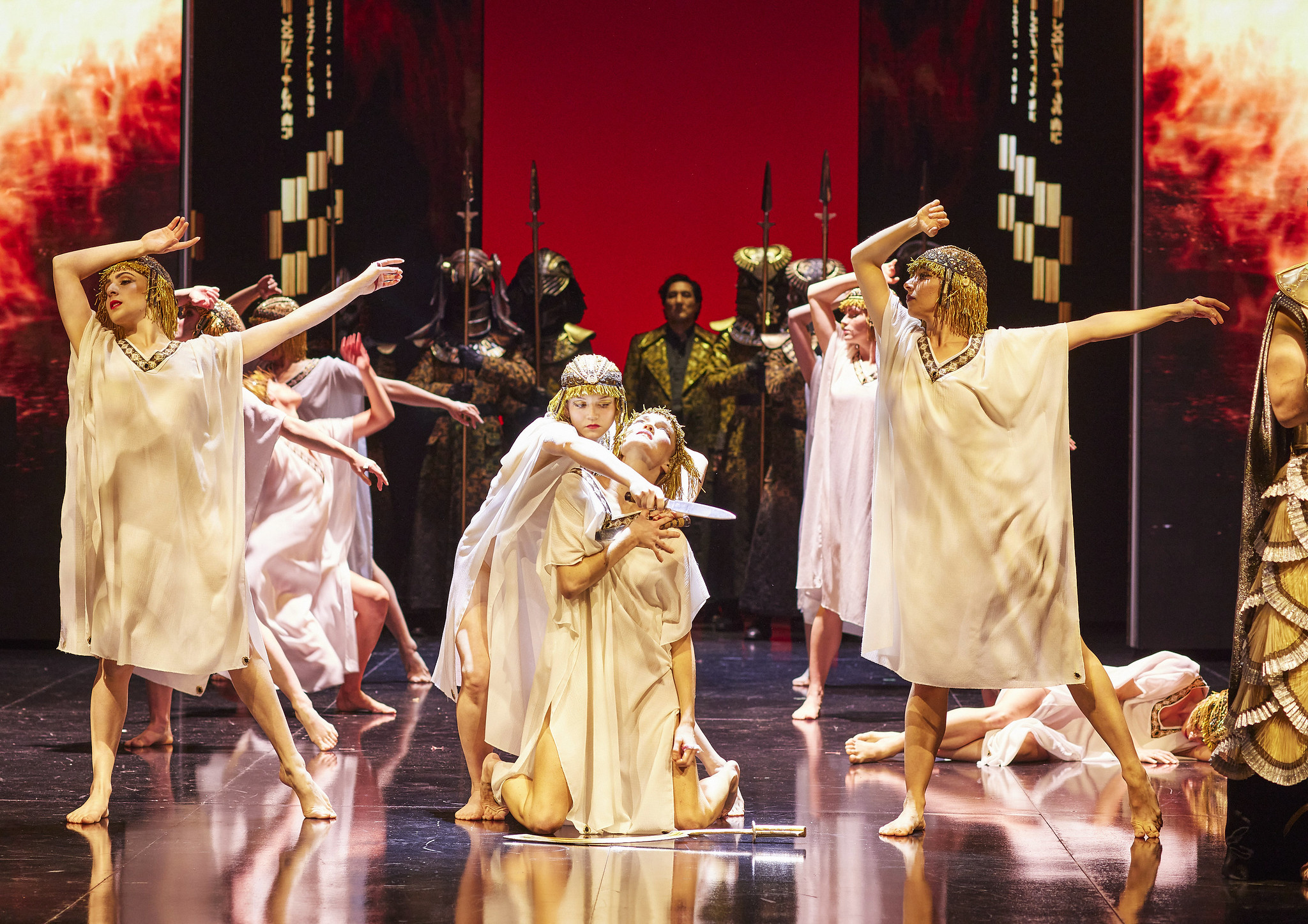
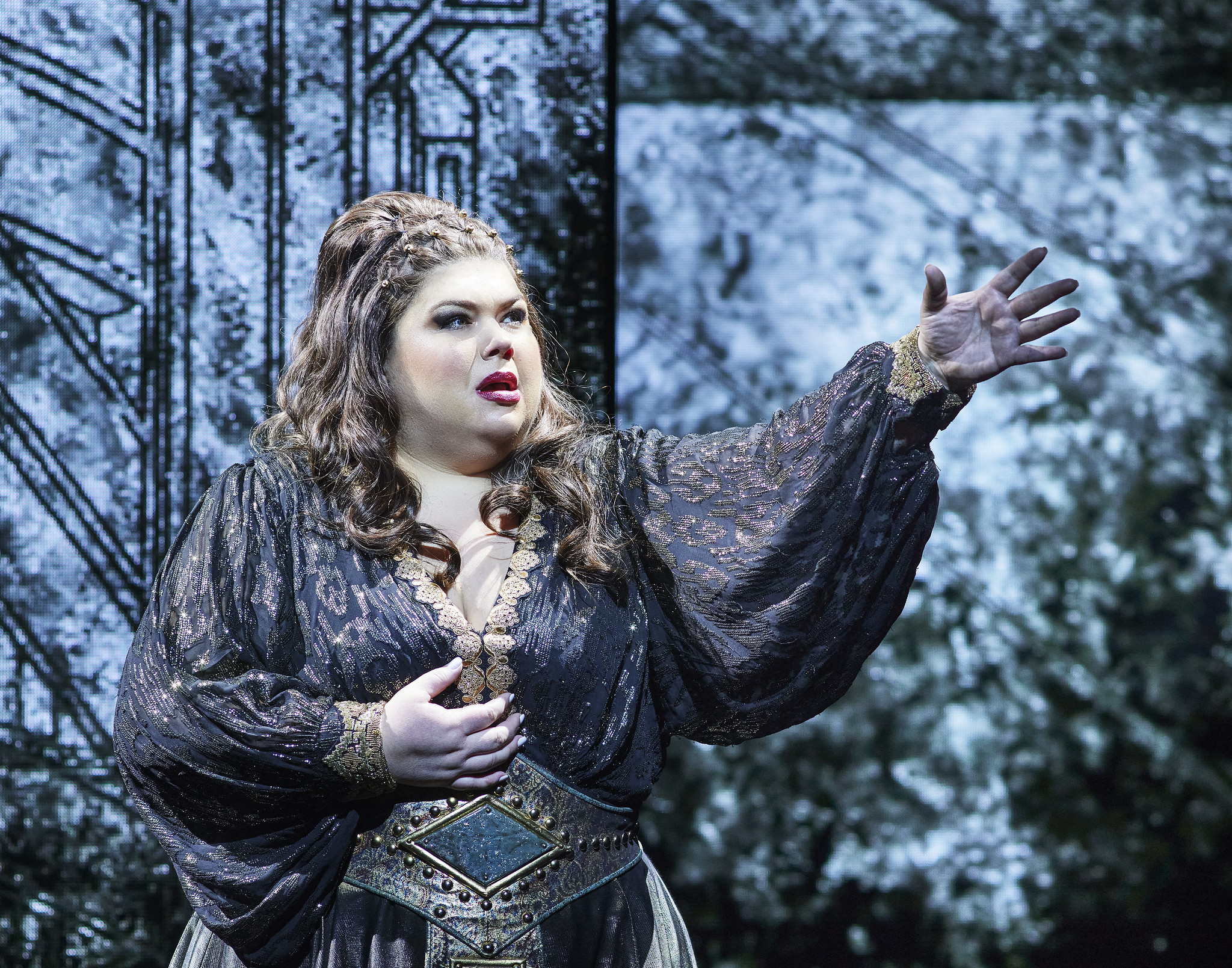 Elena Gabouri, as Aida’s rival Amneris – the Egyptian Princess – was equally as powerful. Gabouri sang her climatic scene with tragic force and embraced a full and bold vocal line to match her surroundings. Her thrilling voice were always heard from the clamouring highs to her guttural chest notes. The ill-fated hero Radamés, played by Najmiddin Mavlyanov, had a strong and natural tone. His aria, which opens the opera, was flowing with richness and intensity without being overdone.
Elena Gabouri, as Aida’s rival Amneris – the Egyptian Princess – was equally as powerful. Gabouri sang her climatic scene with tragic force and embraced a full and bold vocal line to match her surroundings. Her thrilling voice were always heard from the clamouring highs to her guttural chest notes. The ill-fated hero Radamés, played by Najmiddin Mavlyanov, had a strong and natural tone. His aria, which opens the opera, was flowing with richness and intensity without being overdone.
Warwick Fyfe, as Amonasro – Adia’s father and defeated Ethiopian King – had fierce defiance in his voice which intensified the drama. Roberto Scandiuzzi delivered a performance as the vengeful high priest Ramfis with a forceful textured sound, while David Parkin as Pharaoh gave a leaner and more refined tone.
The duets in Aida are crucial to the opera’s narrative and outline the conflicts between the characters. Under the baton of master conductor Stuart Stratford, the Opera Australia Orchestra created flexibility in tempo and accompanied the various pairings between the three principals with ease. Aida is just as much about the story as it is about the music. The orchestra shines showing their musical mastery of Verdi’s score, ranging from delicate moments to the complex melodrama. Six trumpeters who appear unexpectedly in the balconies to the left and right of the stage give the celebratory Triumphal March extra oomph with big, bold, and brassy tones. Their thrilling performance adds a sonorous sound and visceral presence to one of the most famous pieces of classical music ever written. The ballerinas, as possessed Egyptian priestesses, are a highlight and thoroughly commit to the interesting choreography.
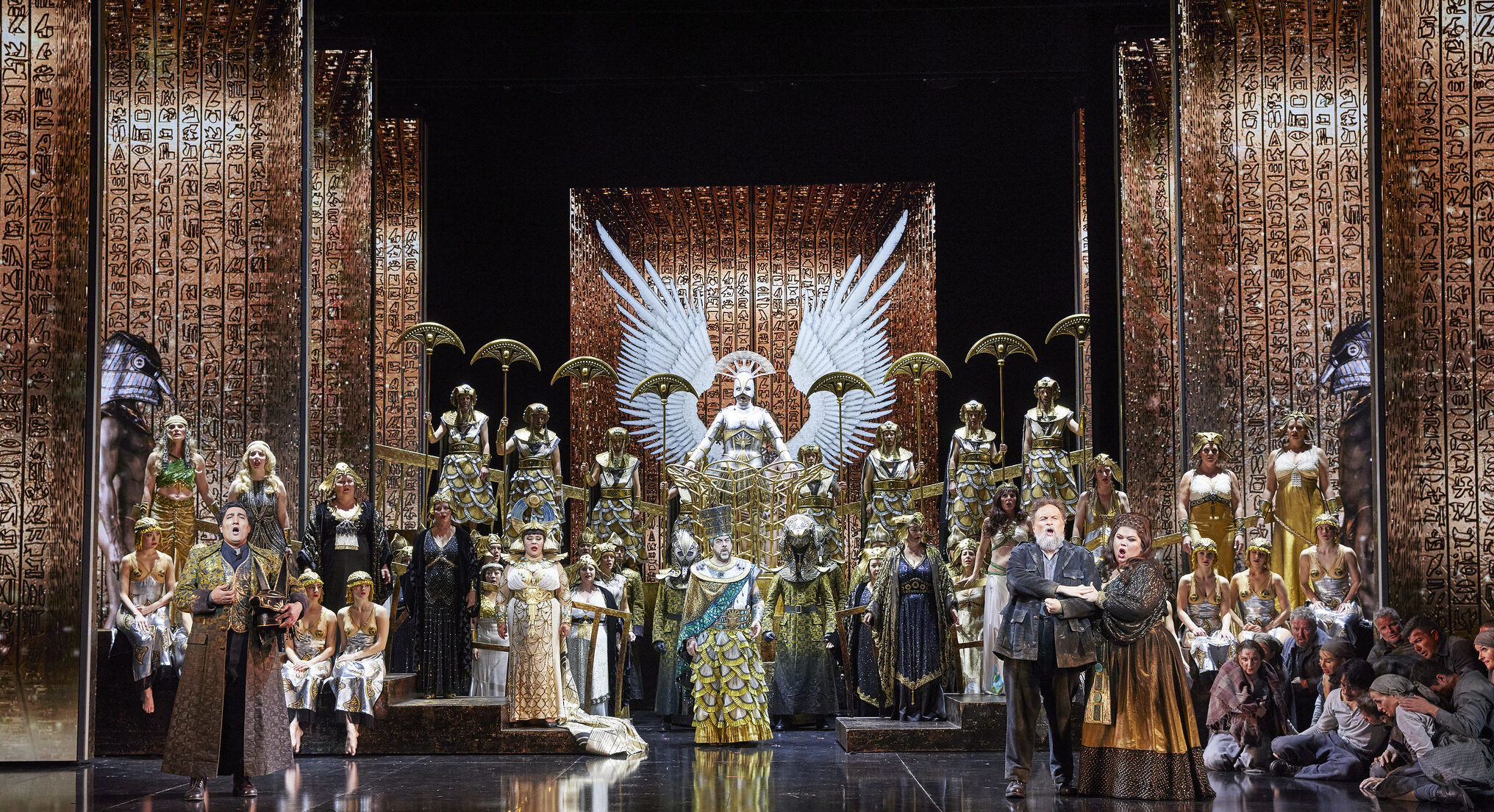 On a curious note, when Radamés sings his first exquisite aria the screens project his dreaming thoughts of his beloved Aida. An image of a slender female figure and face of African descent. However, when Aida appears she seems to be the opposite. Aida, although Ethiopian, is regularly played by white performers and the projected image serves to highlight this discrepancy.
On a curious note, when Radamés sings his first exquisite aria the screens project his dreaming thoughts of his beloved Aida. An image of a slender female figure and face of African descent. However, when Aida appears she seems to be the opposite. Aida, although Ethiopian, is regularly played by white performers and the projected image serves to highlight this discrepancy.
Aida is everything opera is meant to be and more. This production of Aidia is opulent, colossal, and captivating. With a fusion of cinematic visual effects, theatrical thrills, powerful voices, and exhilarating music, Aida proves time and time again why it is a treasured operatic masterpiece.
– Antoinette Milienos
Antoinette is a Journalist, Violinist, and chronic suffer of F.O.M.O (fear of missing out).
Aida runs for approximately 2 hours and 50 minutes, including one interval. The opera plays at Joan Sutherland Theatre, Sydney Opera House through to July 21. Buy tickets now. The venue is accessible.

